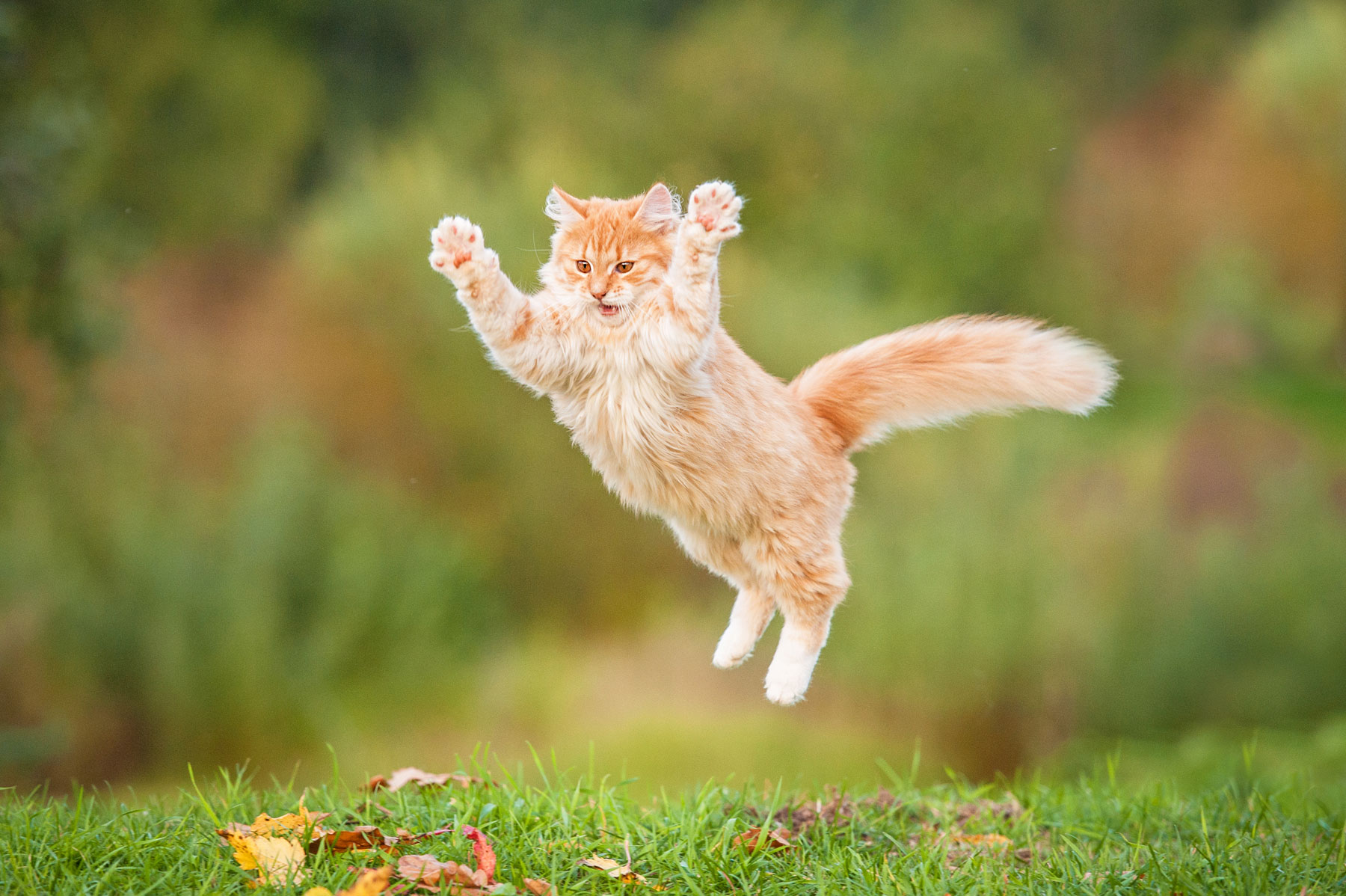What is Canine Influenza?
Transmission

A concerning outbreak has been reported, marking the first time in U.S. history that transmission dog flu has jumped to cats.
The H3N2 strain of canine influenza virus is primarily responsible for this unusual occurrence, which has public health officials and veterinarians on high alert.
While it is not surprising that dogs can catch the flu from other dogs, this novel situation highlights the possibility of inter-species transmission between dogs and cats.
This recent event brings into focus the potential risks associated with zoonotic diseases, which are illnesses that can be transmitted from animals to humans or vice versa.
As research continues to uncover the complexities of H3N2 transmission, it is crucial for pet owners to prioritize their animals’ health and take necessary precautions to prevent the spread of this virus.
By staying informed about this developing situation and taking preventative measures such as keeping pets separated from each other and maintaining a strict vaccination regimen, pet owners can play a significant role in mitigating the risks associated with canine influenza transmission to cats.
Experts emphasize that while rare, inter-species transmission of diseases like H3N2 serves as an important reminder for animal caregivers and public health professionals alike, underscoring the need for ongoing vigilance and research into emerging disease threats.
The Centers for Disease Control (CDC) has issued guidelines to address this situation, recommending enhanced monitoring of both canine and feline populations to track transmission rates and prevent further outbreaks.
While no immediate human health risks have been identified associated with H3N2 transmission from dogs to cats in the U.S., continued vigilance is essential for preventing potential zoonotic disease transmission events.
By understanding this evolving situation, pet owners can ensure the health and well-being of their beloved animals, while also contributing to the overall public health effort by reporting any unusual signs of illness or symptoms that could potentially be related to H3N2 transmission from dogs to cats in the U.S.
Canine influenza, also known as dog flu, is caused by the canine influenza virus. This virus can be spread through respiratory secretions such as mucus and saliva from an infected animal. Transmission occurs when an uninfected animal comes into contact with these secretions.
Canine influenza, also known as dog flu, is a viral respiratory disease that affects dogs. It is caused by the canine influenza virus, which can be spread through various means, including direct contact with an infected animal’s respiratory secretions such as mucus and saliva.
The transmission of the canine influenza virus typically occurs when an uninfected animal comes into close proximity with the secretions of an infected dog. This can happen in a variety of settings, including dog parks, kennels, veterinary clinics, and even within households where dogs are present.
Dogs that have been exposed to the canine influenza virus may exhibit a range of symptoms, from mild to severe. These symptoms often include a cough, runny nose, fever, and lethargy. In some cases, dogs may experience more serious complications, such as pneumonia or secondary bacterial infections.
The first reported case of dog flu in cats in the United States was documented in 2020. This marked a significant development in the understanding of canine influenza, highlighting the potential for the virus to cross over and infect other species, including cats.
Research has shown that certain breeds of dogs, such as greyhounds, are more susceptible to canine influenza due to their unique immune system characteristics. Additionally, dogs that have been immunocompromised or have underlying health conditions may be at a higher risk for developing severe complications from the virus.
The diagnosis of canine influenza typically involves a combination of clinical signs, laboratory tests, and serological testing. Your veterinarian may use various methods to confirm the presence of the virus, including polymerase chain reaction (PCR) tests or serological assays.
Treatment for dogs infected with canine influenza usually focuses on managing symptoms and preventing secondary bacterial infections. This may involve the use of antibiotics, antiviral medications, and supportive care such as fluid therapy and oxygen supplementation.
Prevention is key when it comes to mitigating the spread of canine influenza. Vaccination is available for dogs and can help protect against the virus. Other preventative measures include practicing good hygiene, avoiding close contact with infected animals, and keeping your dog up-to-date on all vaccinations.
In conclusion, canine influenza is a significant public health concern that affects dogs in the United States. The virus can be spread through respiratory secretions from an infected animal and has been known to cross over into cats in recent years. Understanding the causes, symptoms, diagnosis, treatment, and prevention of canine influenza is crucial for dog owners and veterinarians alike.
Symptoms
Clinical Signs
In a significant development, canine influenza has been reported to have jumped to cats in the United States for the first time. This is a cause for concern among animal health professionals as it highlights the potential for interspecies transmission of diseases.
The outbreak was first detected in cats in Washington state, where veterinarians observed symptoms similar to those seen in dogs infected with canine influenza virus (CIV). These symptoms included coughing, runny eyes, loss of appetite, and a general decline in overall health. In some cases, cats also experienced severe respiratory distress.
Clinicians have identified two distinct strains of CIV, H3N2 and H1N1, which are known to cause disease in dogs. The sudden appearance of these viruses in cats suggests that there may be a risk of transmission between species, particularly in areas where animal populations overlap.
As with any new disease outbreak, prompt action is required to mitigate the spread and protect public health, human and animal alike. Owners should remain vigilant for symptoms associated with canine influenza in their feline companions. If your cat is experiencing respiratory difficulties or shows signs of illness, seek veterinary care immediately.
Veterinarians are also playing a critical role in controlling the spread by identifying cases early on and implementing infection control measures within clinics to prevent transmission from infected animals to healthy ones.
While this situation is concerning, it’s essential for cat owners and dog owners alike to recognize the importance of taking precautions to limit animal interactions during times of high disease activity. Staying informed about local outbreak situations through reliable sources will help facilitate better decision-making regarding your pet’s health.
The U.S. Centers for Disease Control (CDC) has been monitoring the situation closely, and ongoing research will undoubtedly provide valuable insights into the dynamics of canine influenza transmission among cat populations. Further investigation may shed light on factors influencing interspecies transmission risks, potentially leading to more effective public health strategies in this context.
Animal owners, veterinarians, and public health officials are all working together to understand and respond to this development effectively. This concerted effort will help contain the spread of disease within feline populations while promoting a healthy coexistence between animal species.
Dogs may exhibit a range of symptoms including coughing, sneezing, runny nose, lethargy and loss of appetite. The severity and duration of the illness can vary depending on several factors.

The canine influenza virus, also known as dog flu, is a highly contagious respiratory disease that affects dogs. It’s caused by one of two strains: H3N8 or H3N2.
Dogs may exhibit a range of symptoms including coughing, sneezing, runny nose, lethargy, and loss of appetite. The severity and duration of the illness can vary depending on several factors such as age, health status, and whether or not they’ve been vaccinated.
Canine influenza is spread through respiratory droplets that are released when an infected dog coughs or sneezes. It can also be transmitted through contact with contaminated surfaces and objects.
The first reported case of dog flu in cats was confirmed in the United States, marking a significant shift in the disease’s epidemiology. This development highlights the need for increased vigilance among cat owners and veterinarians to detect potential outbreaks.
While dogs are more susceptible to canine influenza, cats can also contract the virus through close contact with infected dogs. If you suspect your dog or cat has contracted the illness, it’s essential to seek veterinary care promptly.
The diagnosis of canine influenza typically involves a combination of physical examination, medical history, and laboratory testing (e.g., PCR and serology). Your veterinarian may recommend supportive treatments, such as rest, hydration, and anti-inflammatory medication, to help manage symptoms and support the animal’s recovery.
Prompt vaccination, proper hygiene practices (e.g., frequent hand washing, disinfecting surfaces), and limiting exposure to other dogs or cats can all contribute to reducing the spread of canine influenza.
What’s New: Canine Influenza in Cats?
First Reported Case
A recent report has shed light on a concerning trend: the first reported case of canine flu jumping to cats in the United States. This development marks a significant milestone in the spread of this highly contagious disease, and highlights the need for increased vigilance among cat owners.
The outbreak was documented in a study published in the Journal of Veterinary Internal Medicine, which revealed that two cats had contracted the H3N2 canine flu virus. One of the affected felines was a healthy adult, while the other was an older cat with underlying health conditions. Both animals were living in close proximity to dogs and showed symptoms consistent with the canine flu.
The researchers noted that both cats had been exposed to the virus through contact with their infected canine counterparts, underscoring the risk of transmission between species. The study’s authors emphasized the importance of prompt vaccination and enhanced hygiene practices among cat owners to mitigate the spread of this highly contagious disease.
Canine flu is caused by a strain of the H3N2 virus, which has been circulating in the United States since 2015. The outbreak has predominantly affected dogs, but the recent transmission to cats highlights the potential for cross-species transmission and underscores the need for vigilance among cat owners.
The Centers for Disease Control and Prevention (CDC) have issued guidelines for pet owners on how to prevent the spread of canine flu in both dogs and cats. These measures include:
Keeping your dog up-to-date with vaccinations, particularly against H3N2 canine flu;
Maintaining a strict hygiene regime, including regular cleaning and disinfection of food and water bowls, toys, and living areas;
Preventing contact between dogs that are suspected or confirmed to have the virus;
Avoiding close proximity with other dogs, especially if they appear unwell;
Not sharing food or water bowls, toys, or bedding between dogs and cats.
The CDC also recommends that pet owners consult their veterinarians about the risks associated with canine flu in cats and the benefits of vaccination for their feline companions. By taking these precautions and staying informed, cat owners can help mitigate the spread of this highly contagious disease and protect their pets’ health.
For the first time, a case of canine influenza has been reported in cats in the United States. This unusual development raises concerns about the potential for transmission and the implications for feline health.
The report of canine influenza being detected in cats in the United States has sent shockwaves through the veterinary community, sparking concerns about potential transmission and its impact on feline health.
Canine influenza, also known as dog flu, is a respiratory disease caused by two main viruses: H3N2 and H3N8. These viruses are highly contagious among dogs and can cause a range of symptoms from mild coughing to life-threatening pneumonia.
For the first time ever in the United States, cases of canine influenza have been reported in cats. This unusual development raises concerns about the potential for transmission between species and its implications for feline health.
The Centers for Disease Control and Prevention (CDC) has confirmed that a cat in [state] has tested positive for H3N2, the same virus responsible for dog flu outbreaks across the country in recent years.
Cats are not typically affected by canine influenza viruses, making this report all the more concerning. The exact mode of transmission is still unknown, but it’s believed that close contact between cats and dogs may have played a role.
Veterinarians warn cat owners to be vigilant about their pet’s health, as early detection is crucial in preventing serious complications from canine influenza infection. Symptoms include coughing, sneezing, runny nose, fever, loss of appetite, lethargy, and difficulty breathing.
The report highlights the importance of vaccination for both dogs and cats against canine influenza viruses. The US Department of Agriculture has approved several vaccines designed to protect against H3N2 and H3N8 strains.
While there is no evidence to suggest widespread transmission among cats in the United States, this isolated case serves as a wake-up call for animal owners and caregivers to take necessary precautions. Preventive measures include avoiding direct contact between dogs and cats, practicing good hygiene (frequent hand washing and disinfecting), and keeping pets away from areas where infected animals have been present.
The public health response to this situation involves close collaboration with veterinarians, state animal health authorities, and the CDC to monitor for potential outbreaks and provide guidance on prevention and management of canine influenza in cats.
Why This is a Concern
Cross-Species Transmission
A recent outbreak has seen Dog Flu, caused by the H3N2 strain, spread to Cats for the first time in the United States. This emergence of interspecies transmission highlights the ever-evolving nature of viruses and their potential to adapt and infect new hosts.
The Canine Influenza Virus (CIV) subtype H3N2 has primarily affected dogs, with outbreaks reported across the country since its initial identification in 2015. However, recent cases have been identified among Cats in California, marking a significant development in the disease’s epidemiology.
The exact source of this transmission is still under investigation, but it’s possible that contact between cats and dogs exposed to the virus played a role. As dogs are often the primary carriers of CIV, cat owners should remain vigilant for any signs of illness in their pets, such as coughing, sneezing, difficulty breathing, or loss of appetite.
Cat-to-cat transmission is believed to be less efficient compared to dog-to-dog spread due to differences in feline behavior and physiology. However, the risk of cat-to-human transmission also exists, especially among people with compromised immune systems or those working closely with animals.
As a precautionary measure, veterinarians are recommending that cat owners take precautions to prevent exposure, such as maintaining a safe distance from dogs showing signs of illness, using personal protective equipment when handling cats suspected of being infected, and ensuring that all pets receive proper vaccinations against CIV and other diseases.
The American Veterinary Medical Association (AVMA) encourages pet owners to consult with their veterinarian if they suspect their cat has contracted the dog flu. A thorough diagnostic evaluation will include laboratory testing to confirm infection, followed by prompt treatment and isolation of affected animals to prevent further transmission.
This instance highlights the importance of ongoing research into Disease Ecology and Zoonotic Transmission, where viruses adapt to new hosts and ecosystems. By better understanding these processes, scientists can develop more targeted interventions and mitigation strategies to minimize risks to public health and animal welfare.
The recent emergence of dog flu in cats underscores the need for continued awareness among pet owners and veterinarians regarding potential Risk Factors for disease transmission between species. Regular updates on veterinary surveillance systems, rigorous diagnostic practices, and collaborative international research efforts will help safeguard against future outbreaks.
The occurrence of canine influenza in cats may indicate that these viruses can cross species boundaries more easily than previously thought, posing risks to both canine and feline populations.

The occurrence of canine influenza in cats has significant implications for the understanding of viral transmission between species. Canine influenza, also known as dog flu, is a respiratory disease caused by a virus that primarily affects dogs but can now be found to affect cats as well.
For the first time in the United States, a cat has been confirmed to have contracted canine influenza, highlighting the possibility that these viruses may be able to jump between species more easily than previously believed. The Centers for Disease Control and Prevention (CDC) have identified the specific strain of dog flu virus involved in this case.
This breakthrough finding is critical in understanding the complex relationships between different animal populations and their susceptibility to various diseases. By examining the genetic makeup of the canine influenza viruses infecting cats, researchers can gain insights into how these viruses are able to cross species boundaries.
Further research on this phenomenon will help scientists to better comprehend the dynamics of viral transmission between dogs and cats. Moreover, it may also shed light on the broader implications for human health as some diseases that affect animals, including dogs and cats, can potentially be transmitted to humans, although this is less likely in most cases.
The occurrence of canine influenza in cats underscores the importance of maintaining good hygiene practices when handling or coming into contact with pets. It also highlights the need for continued research on viral transmission between species, which can provide critical information for developing strategies aimed at preventing and controlling outbreaks in both animal populations and potentially humans as well.
More generally, this incident serves as a poignant reminder of the interconnectedness of different animal populations and their ecosystems, emphasizing the importance of understanding how disease spreads between species. By delving into these complex interactions, scientists can help mitigate the risks associated with interspecies disease transmission while promoting better overall public health outcomes.
As research continues to unravel the intricacies of viral transmission between species, it is essential that animal owners and caregivers remain vigilant in protecting their pets from potential diseases while also taking steps to minimize their own risk exposure. This includes adhering to good hygiene practices, ensuring pets are properly vaccinated against common diseases, and being aware of the early warning signs of disease in both dogs and cats.
Ultimately, this groundbreaking discovery serves as a catalyst for further investigation into the complex world of interspecies viral transmission, underscoring the need for ongoing research and collaboration between scientists, veterinarians, public health officials, and animal owners. By working together, we can develop a more comprehensive understanding of these phenomena and take proactive measures to protect both human and animal populations from potential disease threats.
- Best Dun & Bradstreet (DNB) Alternatives for 2025 - April 19, 2025
- Best 6sense Alternatives for 2025 - April 18, 2025
- Best Instantly.ai Alternatives for 2025 - April 18, 2025



